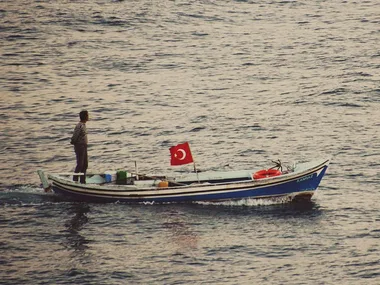In search of Shangri-la
Little Tibet (Ladakh, India)
Sacred mountains, monasteries, medieval villages and moonscapes.
Ladakh, the land of high passes, is a medieval Himalayan kingdom of snow-capped peaks, where whitewashed monasteries cling like limpets to high-altitude ridges. Also known as “Little Tibet”, it lies in the extreme north of the Indian sub-continent, between the sacred peaks of Nun (7135m) and Kun (7087m), and the vast Tibetan plateau to the east. The landscape is so arid, it has been compared with the moon. Here, the Himalayas tower over deserts so dry, with dust so fine, they seem devoid of life. Until, that is, you see a monastery, small as a sugar cube, dwarfed by distance and the immense backdrop of red-brown rock.
Once spotted, hours can pass before you reach this remote outpost by driving with great care up a road of hairpin bends. What awaits you is even more astonishing — hidden valleys, lush and green, irrigated by streams of melt-water from the snow-capped peaks. Peasants in traditional dress tend the fields in a scene of such abundance it almost seems indecent after so much barren wilderness. It is said that such oases were behind the myths of Shangri-la.
Ladakh has some 24 Buddhist monasteries, or gompas, and each one you visit brings a different adventure. During June and September, people from all over Ladakh come to Leh in traditional costume for polo matches, archery contests, religious rites and dances. Out of season, take warm, high-altitude clothing and a hat because the Himalayas are one of the few places on earth where you can sit in the sun with your feet in the shade and suffer sunstroke and frostbite at the same time.
+ Best time to go: May-October.
+ Contact: Peregrine Adventures (tel: 1300 854 500;www.peregrineadventures.com).
World Expeditions (tel: 1300 720 000;www. worldexpeditions.com.au).
+ Visit:www.smarttraveller.gov.aufor more on your chosen overseas travel destinations.
River safari
10-day canoe safari on the Zambezi River.
Wildlife, the Victoria Falls, World Heritage park and spectacular sunsets.
A canoe safari down the Zambezi is all about getting breathtakingly close to African game in safety. Gliding down the river, paddlers have a ringside view of animals drinking and bathing. As the mercury rises, so do the number of beasts quenching their thirst on the river bank. In October, you will feel hot and sticky, but the game will be abundant. Lions, hyenas, antelope, elephants, buffalo, leopards, zebras and giraffes are just some of the creatures you’ll encounter.
To canoe 2700km safely along the Zambezi is impossible. However, anyone of average fitness should be able to manage a 15-day paddle through Zimbabwe’s Mana Pools or Lower Zambezi national parks, areas of great scenic beauty. Each evening, camp is set up on an island in the river, safe from predators. By day, as the flotilla of canoes goes with the current, the guide will keep everyone a safe distance from any hippos. Either before or after the canoe safari, you’d be mad not to visit Victoria Falls or Lake Kariba. You may even want to go white-water rafting downstream from the falls, some of the most exhilarating rapids in the world.
+ Best time to visit: May-October.
+ Contact: Peregrine Adventures (tel: 1300 854 500;www.peregrineadventures.com).
+ Be a smart traveller: For advice on how to travel safely, visitwww.smarttraveller.gov.au. Remember to take travel insurance.
Trek to the end of the world
Patagonia, Chile, South America
Glaciers, turquoise lakes, icebergs, alpine meadows and the Roaring Forties.
Soaring almost vertically for more than 2000 metres above the Patagonian Steppe, the Torres del Paine (Towers of Paine) are three pink granite pillars that dominate the landscape of what may be South America’s finest national park. Forget the endlessly flat pampas of Argentina’s Patagonia. In Chile, this legendary region is as dramatic as any scenery on the planet. Glaciers, some of the largest in the world, shed sapphire-coloured icebergs, six-storeys high, into turquoise lakes, in an immense landscape of alpine meadows carpeted with wild flowers.
Guanacos (delicate versions of the alpaca), pumas, nandus (birds like small emus) and mighty Andean condors are all common, though pumas are rarely seen. Old-style Chilean cowboys (huasos) are often seen rounding up herds of wild horses or sitting around huge camp sites barbecuing whole sheep.
Highlights include visiting the Perito Moreno Glacier and the extraordinary pink towers of Torres del Paine. Don’t forget you need to be fit and equipped with all-weather gear.
+ Contact: Peregrine Adventures (tel: 1300 854 500;www.peregrineadventures.com).
+ Be a smart traveller: Always register your overseas travel withwww.smarttraveller.gov.auand take note of the website’s travel safety advice.
Reach back in time
The Silk Road, China and Central Asia
Ancient cities, blue mosques, deserts, nomads, caravanserai and spices.
From its birth before Christ, the fabled Silk Road has been the ancient link between East and West. For thousands of years, empires rose and fell around it, but communities along it continued to flourish. From the Great Wall of China, camel trains — packed with silk, spices, ivory, gold, exotic animals and plants — threaded their way past Xi’an and the buried terracotta warriors, through western China and the fierce Taklamakan Desert, into Central Asia and Iran (ancient Persia) and Byzantium (now called Istanbul), some 9000km away.
Alexander the Great, Genghis Khan, the Han Chinese and Soviet empires have all left their mark. The Chinese section of the Silk Road is an epic journey in itself and visits desert oases, sacred lakes, Buddhist caves full of frescoes, imperial tombs, pagodas and the cities of Lanzhou and Kashgar. Crossing into Central Asia takes you on to the fabled cities of Tashkent, Samarkand, Bukhara and Khiva.
Today, Samarkand’s Registan Square is bounded by three of the finest Islamic buildings on earth, including a giant blue mosque. It is a city where ancient buildings are bordered by modern highways and clunky Soviet architecture. Little Khiva, deep in the Kyzylkum Desert, is a jewel with turquoise-tiled monuments. Bukhara, with its avenues of twisted mulberry trees and ancient bazaar, is where Genghis Khan declared himself the Scourge of God, before killing every male taller than the butt of a whip. In Tashkent, there’s an open market that sums up today’s silk route. Here, you’ll find soap from Iran, shampoo from the Gulf, plastic goods from China, guns from Afghanistan and Soviet medals, alongside spices, nuts, rice and dried fruits. Take gear for hot deserts and chilly mountain passes.
+ Contact: Peregrine Adventures (tel: 1300 854 500;www.peregrineadventures.com).
+ Be a smart traveller: For travel advice, visitwww.smarttraveller.gov.au.
Newsletter conversion description. Get the latest in your inbox.

























.jpg?resize=380%2C285)
















